
William A. Brookshire Department of Chemical & Biomolecular Engineering Newsletter
Fall 2024


William A. Brookshire Department of Chemical & Biomolecular Engineering Newsletter
Fall 2024
Dear Colleagues,
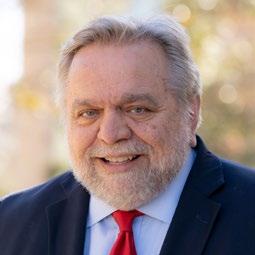
I am delighted to share the latest news from the William A. Brookshire Department of Chemical and Biomolecular Engineering highlighting the recent accomplishments of our faculty and students. Two outstanding new faculty members, Dr. Lawrence (Larry) Dooling and Dr. Sri Bala Gorugantu, will be joining the Department in January, 2025, raising the number of tenure-track faculty members to 25, the highest in the history of the Department. The Department’s research enterprise continues to grow with major research grants being awarded to faculty members and high-impact research articles being published in prestigious scientific journals. There is a broad spectrum of exciting research projects in the research groups of our faculty members with a few recent accomplishments being highlighted in this newsletter. I invite you to take a moment and look through the entries of our newsletter, and if any strike your interest, I encourage you to reach out to me personally.
Warm Regards,
William A. Brookshire Department Chair and Professor
William A. Brookshire Dept. of Chemical & Biomolecular Engineering University of Houston

Pictured: Fluorescent-based technology underway in the lab of UH engineering professor Richard Willson
CHEMICAL AND BIOMOLECULAR ENGINEERING

The University of Houston is part of a $10 million effort from the National Institute for Innovation in Manufacturing Biopharmaceuticals (NIIMBL) to help address key opportunities for innovation in biopharmaceutical manufacturing.
Among the eight new technology and workforce development projects selected for funding by NIIMBL is one from the lab of Richard Willson, Huffington-Woestemeyer Professor of chemical and biomolecular engineering at UH. Willson’s project proposes a new mix-and-read antibody measurement system that uses fluorescent materials to determine the amount of antibody present in a sample.
It is hard to overstate the importance of antibodies, the molecular soldiers produced by immune cells that seize upon foreign invaders in the body, such as pollen or bacteria, and mark them for elimination.
“In the course of the manufacturing processes, it’s important to know the concentration of antibody in your sample and this measurement needs to be made many times in a typical manufacturing process,” said Willson, who is no stranger to the fluorescent business and is pioneering the use of glow sticks to detect biothreats for U.S. Navy. A few years ago, he developed a fluorescent material (or reagent) that emits one color of light when excited with another color of light.
On the Willson team are Katerina Kourentzi, research professor of chemical and biomolecular engineering at the University of Houston; Yan Chen, Agilent; Midori Greenwood-Goodwin, Genentech/Roche; and Mathura Raman, Bristol-Myers Squibb.
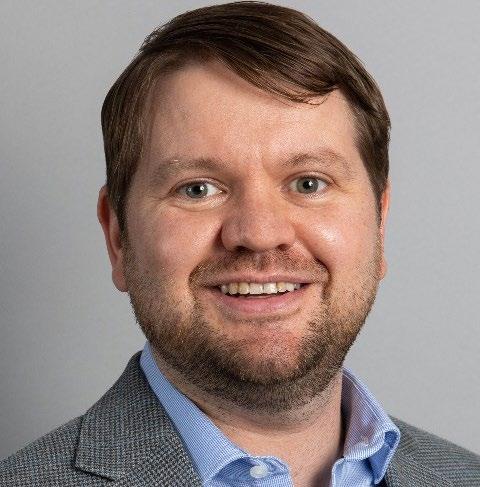
Lawrence (Larry) Dooling, Ph.D., will join the William A. Brookshire Department of Chemical and Biomolecular Engineering as an Assistant Professor in January, 2025. Dr. Dooling earned his Ph.D. in Chemical Engineering from the California Institute of Technology, where he worked on programming viscoelastic behavior in artificial protein materials under the guidance of Prof. David Tirrell. He is currently a Research Associate at the University of Pennsylvania working on macrophage-based cancer immunotherapy with Prof. Dennis Discher. Dr. Dooling’s research aims to elucidate the mechanisms underlying phagocytosis of cohesive solid tumor cells by macrophages to improve the efficacy of macrophage-based cancer immunotherapy.
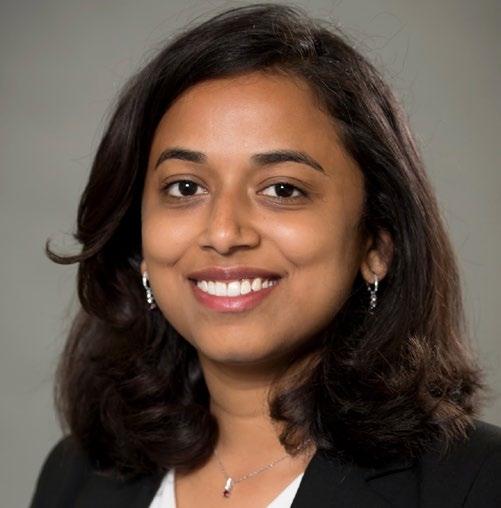
Sri Bala Gorugantu, Ph.D., will join the William A. Brookshire Department of Chemical and Biomolecular Engineering as an Assistant Professor in January, 2025. Dr. Gorugantu earned her Ph.D. in Chemical Engineering from Ghent University (Belgium), where she investigated the kinetics underlying the fast pyrolysis of lignocellulosic biomass to produce green chemicals under the guidance of Prof. Kevin Van Geem. She is currently a postdoctoral researcher in the Department of Chemical and Biological Engineering at Northwestern University, where she develops detailed kinetic models of thermoplastic polymers for monomer recovery with Prof. Linda Broadbelt. Dr. Gorugantu’s research interests are in the areas of chemical kinetics, reaction engineering, and advanced characterization techniques.

Jerrod Henderson, Assistant Professor in the William A. Brookshire Department of Chemical and Biomolecular Engineering, is co-PI of a new $3 million award from the National Science Foundation that aims to help address a STEM teacher shortage and retention crisis.
The $3 million NSF award to teachHOUSTON, the University of Houston’s renowned STEM teacher preparation program, will help address a STEM teacher shortage and retention crisis.
The new program, “Developing STEM Teacher Leaders in Culturally Responsive Classroom Management, Engineering Design and Induction,” is a partnership between UH, the National Math and Science Initiative and several Houston-area high-need school districts including Pasadena, Alief, and Spring Branch Independent School Districts.

Alamgir Karim, the Dow Chair and Welch Foundation Professor in the William A. Brookshire Department of Chemical and Biomolecular Engineering and Director of the Materials Engineering Program, is collaborating with researchers from three universities to redesign robotic hands to increase their dexterity. With a $650,000 grant from NSF’s Convergence Accelerator Track M program the projects aims to create a transformative, bio-inspired re-design of the robotic hand. The new approach to robot hand design could have significant societal impact. An estimated 400,000 Americans are living with some form of upper limb loss, and the researchers aim to redesign the robot hand for greater functional dexterity.

Anil K. Bhowmick, Research Professor in the William A. Brookshire Department of Chemical and Biomolecular Engineering, has been awarded the International Rubber Conference Organisation’s (IRCO) Gold Medal for his contributions to research, education, and industry in the field of rubber science and engineering.
First awarded in 1994, IRCO states that the medal recognizes the contributions of a person of exceptional merit who has made distinguished contributions to IRCO conferences as organizer, chair of conferences or symposia, or presenter. Bhowmick is the fifth US-based recipient to be recognized with the award since its inception.

CHEMICAL AND BIOMOLECULAR ENGINEERING

A team of researchers, led by the University of Houston, has discovered two new ways of preventing and treating respiratory viruses. In backto-back papers in Nature Communications, the team — from the lab of Navin Varadarajan, M.D. Anderson Professor of William A. Brookshire Chemical and Biomolecular Engineering - reports the development and validation of NanoSTING, a nasal spray, as a broad-spectrum immune activator for controlling infection against multiple respiratory viruses; and the development of NanoSTING-SN, a pan-coronavirus nasal vaccine, that can protect against infection and disease by all members of the coronavirus family.
NanoSTING is a special formula that uses tiny fat droplets to deliver an immune-boosting ingredient called cGAMP. This formula helps the body’s cells stay on high alert to prevent attack from respiratory viruses.
Despite the successful implementation of multiple vaccines against SARSCoV-2, these vaccines need constant updates due to viral evolution, plus the current generation of vaccines only offers limited protection against transmission of SARS-CoV-2.
University of Houston | Cullen College of Engineering
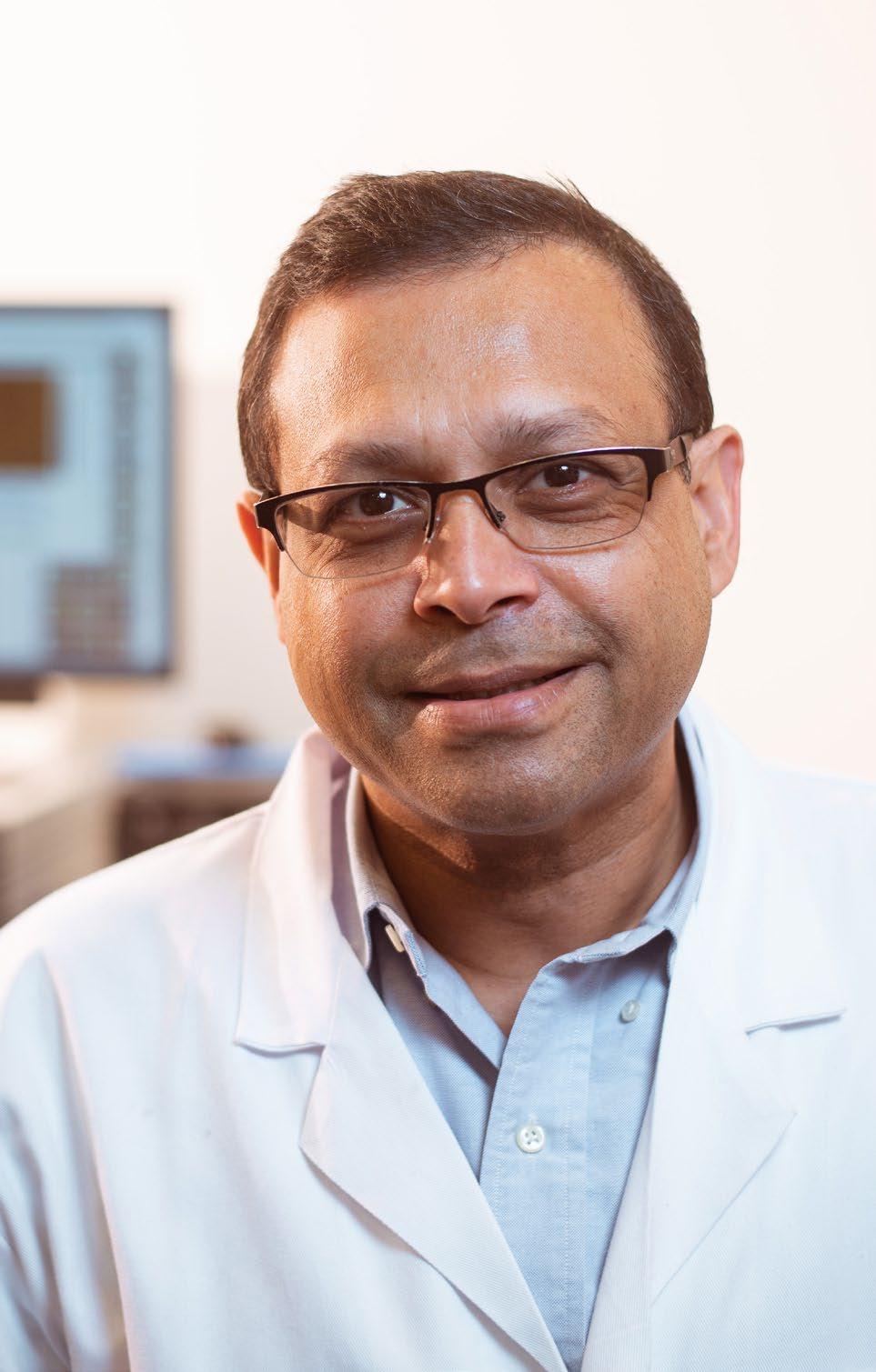
One of the major unanswered questions about the origin of life is how droplets of RNA floating around the primordial soup turned into the membrane-protected packets of life we call cells.
A new paper by engineers from the University of Houston’s William A. Brookshire Department of Chemical Engineering (UH ChBE) and the University of Chicago’s Pritzker School of Molecular Engineering (UChicago PME), and biologists from the UChicago Chemistry Department have proposed a solution.
In the paper published today in Science Advances, UH ChBE’s former graduate student Aman Agrawal (now a postdoctoral researcher at UChicago PME) and his co-authors –including UH ChBE’s Alamgir Karim, UChicago PME Dean
Emeritus Matthew Tirrell and Nobel Prize-winning biologist
Jack Szostak – show how rainwater could have helped create a meshy wall around protocells 3.8 billion years ago, a critical step in the transition from tiny beads of RNA to every bacterium, plant, animal, and human that ever lived.
“While it is impossible to know the exact conditions on early Earth, our experiments show that this pathway for stabilizing protocells might have been a critical step in enabling evolution in these protocells,” said Karim.
Karim is UH Dow Chair and Welch Foundation Professor of chemical and biomolecular engineering, and director of both the International Polymer & Soft Matter Center and the Materials Engineering Program at UH.
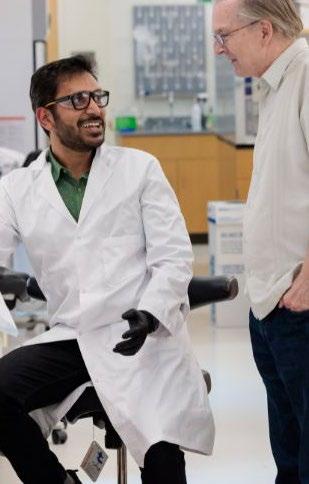

Dipayan Chakraborty, a Ph.D. candidate working under the supervision of Abraham E. Dukler Professor Jeffrey Rimer, has been awarded the 2024 American Institute of Chemical Engineers (AIChE) Separations Division Graduate Student Research Award for Crystallization & Evaporation for his work on cholesterol crystallization.
“Many people in the United States and all over the world have problems with high lipids, or high cholesterol, in the body. This can ultimately lead to plaque formation in the heart, which can lead to heart attack,” explained Chakraborty. This research also has significant implications for the prevention and treatment of gallstones, which are formed as a result of the same process of lipid crystallization.
Chakraborty completed both his BS and MS in chemical engineering in India before joining the William A. Brookshire Department of Chemical and Biomolecular Engineering at the University of Houston in 2020.
Kosar Rahimi, a Ph.D. candidate working under the supervision of Assistant Professor and CPRIT Scholar in Cancer Research Gül H. Zerze, has won the second-place poster prize at the 28th Annual Sealy Center for Structural Biology & Molecular Biophysics (SCSB) Symposium.
Rahimi’s research uses molecular simulations in an attempt to find biological pathways leading to human health improvements.
“Molecular Dynamics simulation holds immense potential in providing atomistic-level insights into the dynamic behavior of biomolecules,” she said. “However, two challenges persist: the accuracy of force fields and computational cost. The latter may lead to insufficient sampling of conformational states.”
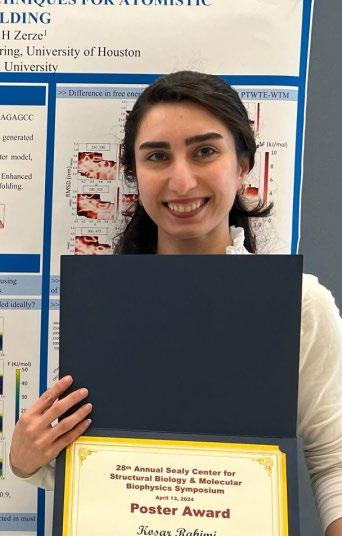
The University of Houston Cullen College of Engineering addresses key challenges in energy, healthcare, infrastructure, and the environment by conducting cuttingedge research and graduating hundreds of world-class engineers each year. With research expenditures topping $40 million and increasing each year, we continue to follow our tradition of excellence in spearheading research that has a real, direct impact in the Houston region and beyond.


UH Cullen College of Engineering
William A. Brookshire Department of Chemical and Biomolecular Engineering
Engineering Building 1, Room S222
4226 Martin Luther King Boulevard
Houston TX 77204-4004
@UHEngineering